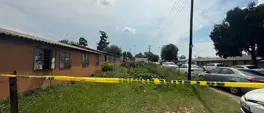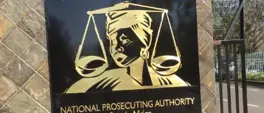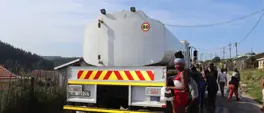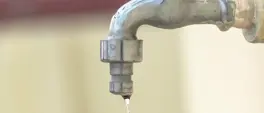Tshwane municipality counting losses in revenue collected at landfill sites
Thabiso Goba
8 July 2024 | 4:00The municipality has lost at least R29 million in the last decade.
PRETORIA - The capital city currently has four landfill sites that are active: Hatherley, Ga-Rankuwa, Bronkhorstspruit and Soshanguve.
A recent report tabled to council showed the municipality is not getting as much money as it should from the sites.
For the 2022/23 financial year, the projected revenue from the landfill was R114 million. However, the actual revenue collected was R85 million, leaving a variance of over R29 million.
“The income realised for previous financial years could be increased if the landfill operations were equipped with proper infrastructure such as weighbridges to support rigorous collection of billing data,” the report stated.
There are a number of other reasons the capital city is losing revenue on its landfill sites.
NO WEIGHTBRIDGES A MAJOR CONCERN
Several council reports have cited an outdated billing system, poor security and non-operational weighbridge amongst others.
Ziyanda Zwane, Tshwane MMC for environment and Agriculture Management, said the city is working on digitising its systems, which will improve revenue collection.
“Currently we are using a manual system as is highlighted on the report. On the manual system, we are making sure that our city contractors, when they submit invoices, we recover all the landfill fees before we pay them what they invoice, and also on our private customers, we have a manual system that captures the amount of waste they are bringing in and then we are sending them bills,” he said.
The municipality also generates a stop list every month, which has details of private clients who owe the city and must not be allowed to dispose waste until they have settled their accounts.
However, a much more pressing concern for the municipality will be its weighbridges that Zwane said have not been working for about a decade, resulting in significant revenue loss for the city.
A weighbridge is used to measure the weight of a vehicle and its contents.
At landfill sites, weighbridges play a crucial aspect at determining how much a customer should be charged for the waste they are carrying.
A report recently presented to the Tshwane council has cited vandalism and a lack of infrastructure maintenance as the main reasons behind the weighbridges not working.
In the absence of a weighbridge, the municipality has been charging its customers based on the maximum capacity each vehicle can carry.
However, as the report states, this is not an accurate measure of weight, as most customers usually pack more waste than their vehicles are regulated to carry.
Zwane, said this also works the other way, where the city is paying contractors more money than the waste they collected.
“What is more important about them working actually is we are able to measure the amount of waste we are managing in the landfill so the reporting is accurate. Number two, we are able to plan in terms of budgeting in that this is the amount of waste we are receiving, and we need to budget this much so that we are to upkeep the landfill,” he said.
Without giving an actual number, Zwane said the city was planning on repairing a few weighbridges this financial year.
However, the cash-strapped municipality will have to fork out about R17.6 million rand to fix its landfill weighbridges
The report estimated R4.4 million would be needed for the repair and upgrades of each weighbridge at the landfill site.
Zwane said the municipality is working on finding the money.
“It’s an ongoing engagement and we are promising to find a budget in these coming financial years to solve the issue,” he said.
For this current financial year, the municipality has set aside R5.2 million for repairs at landfill sites.
Another issue for the municipality is the growing number of waste pickers at its landfill sites, which has compromised the security and infrastructure.
The report recently said the capital city’s four landfill sites all suffer from “excessive vandalism” along its parameters.
This has led to unauthorised entry of persons and waste into the sites, resulting in revenue loss for the city.
Get the whole picture 💡
Take a look at the topic timeline for all related articles.













